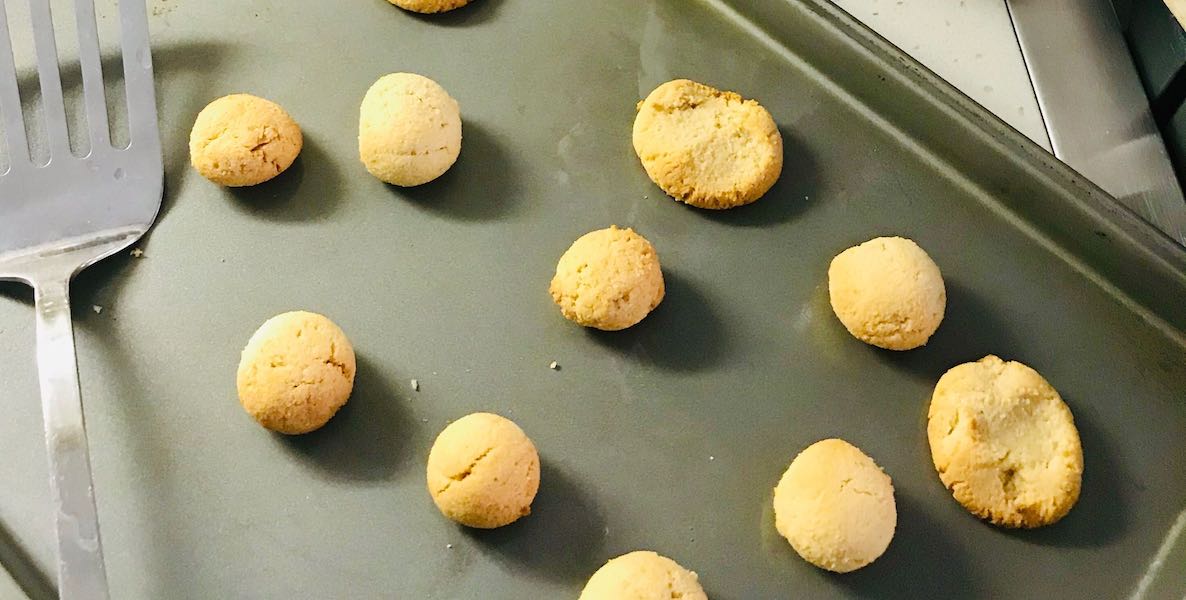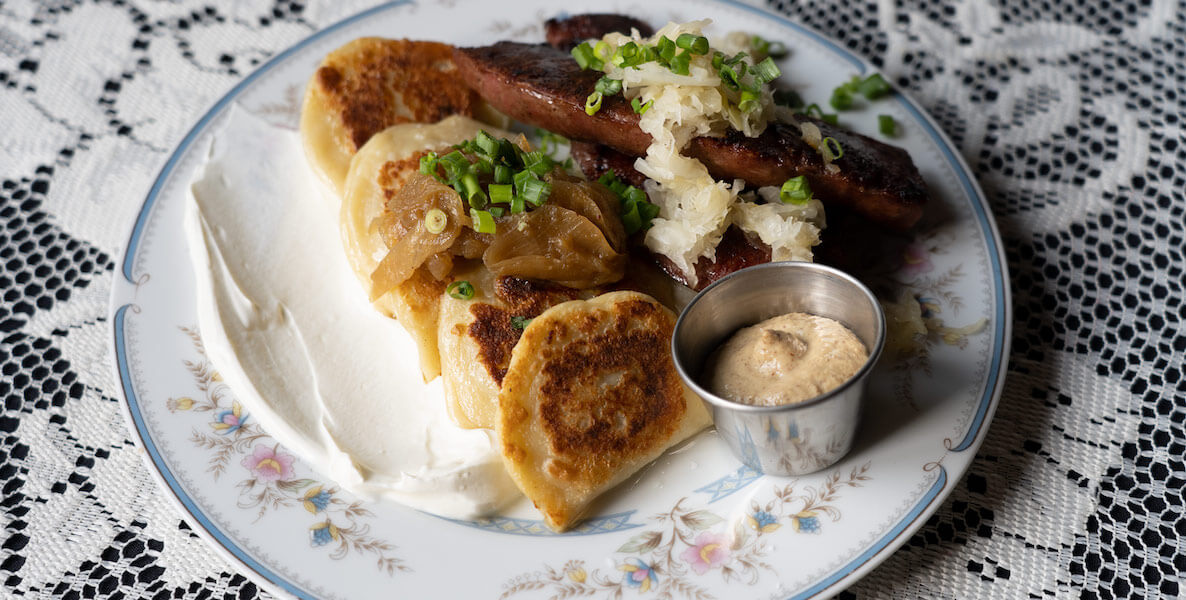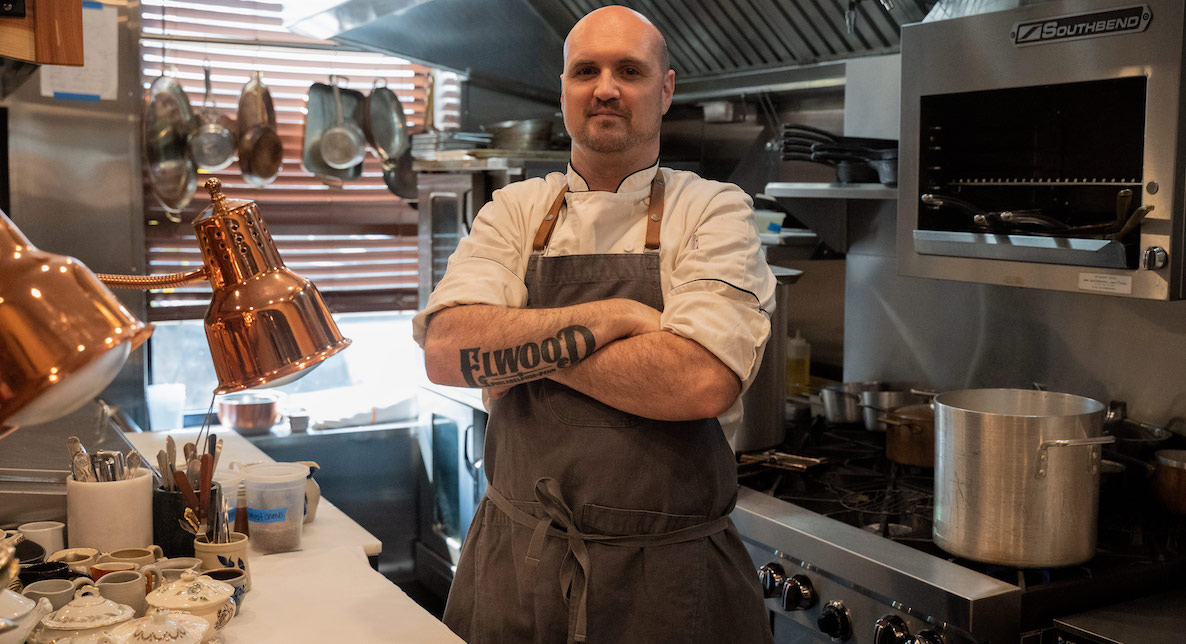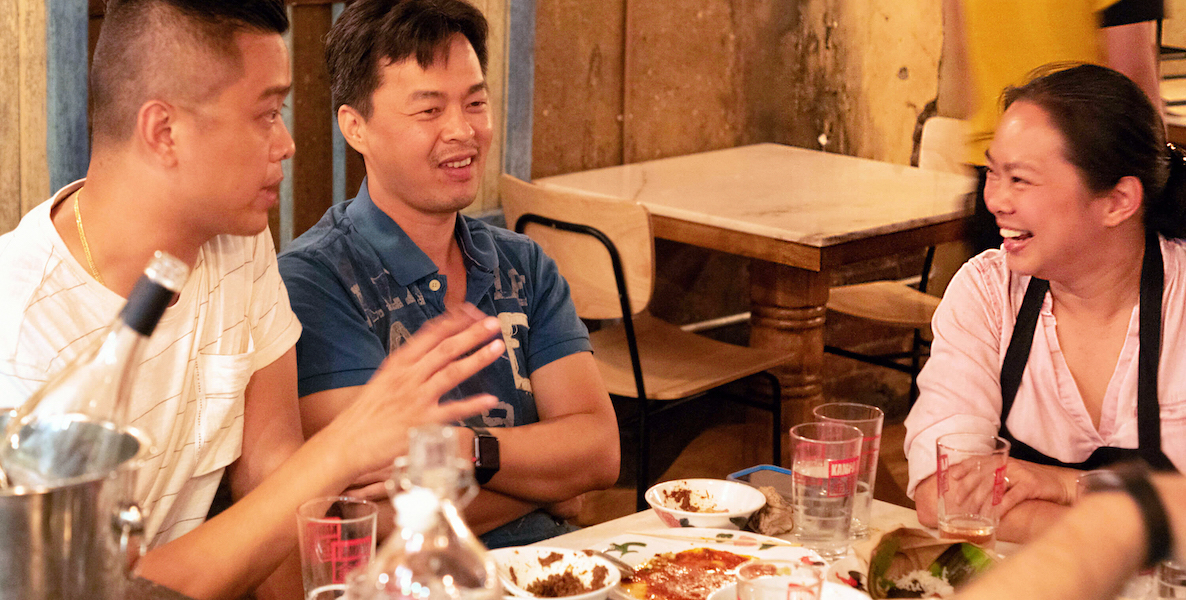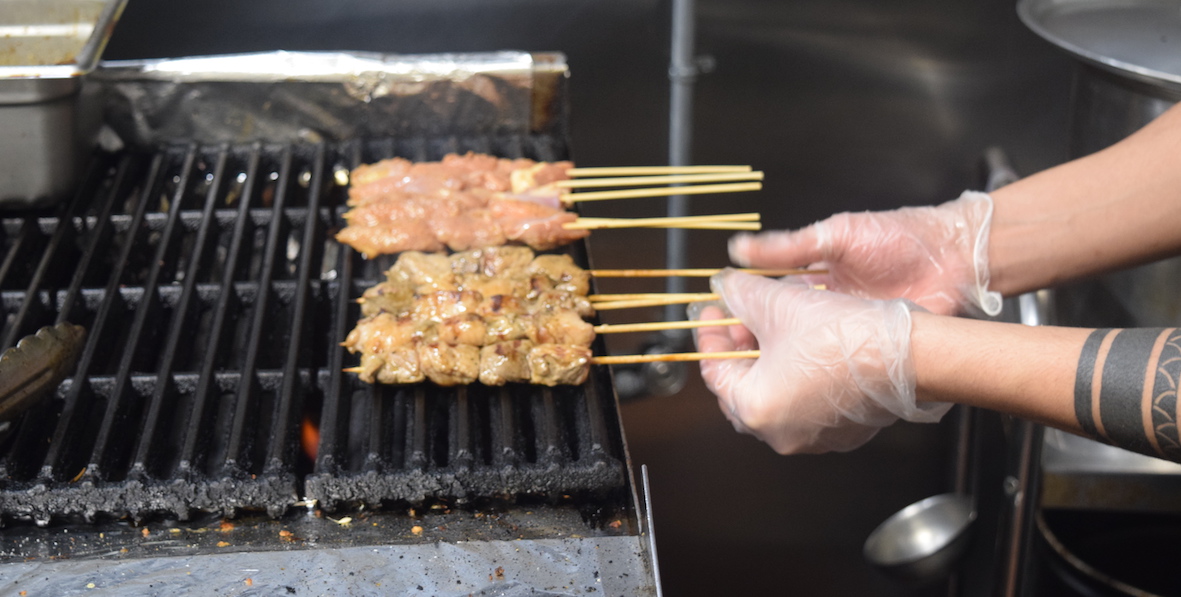One of Philadelphia’s best dim sum spots is a sleeper. It’s rarely packed, hasn’t had a major review, doesn’t make the usual roundups and best-of lists, and most people I commend it to say, “Hmm,” in vague recognition.
That’s surprising, because its New York City location is Chinatown’s oldest continuously operating restaurant, a dim sum hall since 1920.
Owner Wilson Tang has three NYC restaurants, employs 150, and operates to financial success and critical acclaim with plans for more units, licensing agreements and an expanded production commissary.
A modest spot—38 seats with another 12 at the bar, Nom Wah Philadelphia has a modern feel, full bar, efficient if brusque service and some of the best dim sum in Philly.
Nom Wah’s signature item, the OG Egg Roll, is a lesson in culinary etymology.
Predating the store-bought wonton wrapper, Tang says, button and wood ear mushrooms, cabbage and water chestnuts are stuffed inside an egg crepe, then battered and fried.
The result is a tenderer version of the standby, yielding to chewiness without vegetable stringiness, and delivering rich umami beyond the confines of its plant-based filling.
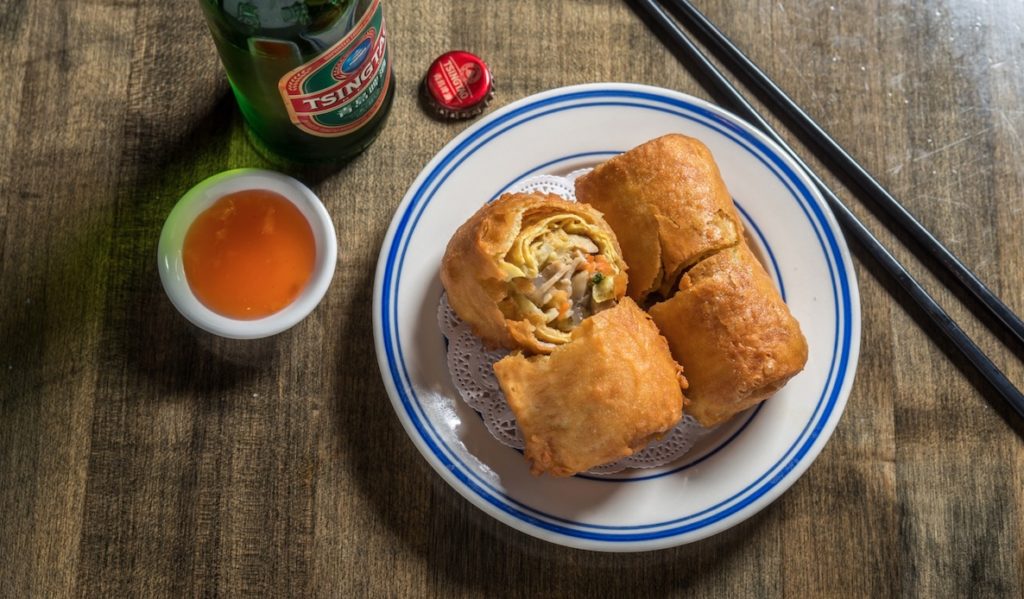
If nothing else, the dish should enter the pantheon of Philly’s great vegetarian drinking food along with the socca at Good King Tavern, the buffalo cauliflower tacos at Bar Bombon and the dan dan noodles at V Street.
The char siu bun, an item ubiquitous in Chinatown, is done properly here, with melt-in-your mouth pork, not too cloying, in a softball-sized bun.
The shrimp dumplings and Shanghainese soup dumplings are imported from Tang’s commissary in New York City, allowing Philadelphians in the know to have a taste of the Doyers Street legacy without the bus ride.
Opened in 2015, Nom Wah Philadelphia sits on a sleepy nondescript block of North 13th Street, in the shadow of the Convention Center. It attracts some savvy foodies visiting a local shrine, confidently navigating the notepad order form menu of 40 dim sum options.
But on my last visit, the room was dominated by a large table of conventioneers on a budget (“alcohol on a separate check please!”) asking if the spice in their General Tso’s chicken could be “toned down.” The NYC locations don’t even have American Chinese food.
...about each restaurantKey takeaways...
It’s heartbreaking for me to see someone who doesn’t know what they are missing ask for an off-menu chicken fried rice rather than experiencing the sublime balance of the shrimp and snow pea leaf dumplings.
Tang laughs it off. “If that’s what people want, I’ll do it,” he says. “My margins are better and there’s much less skill required on the back end to make General Tso’s or lo mein [than hand-formed dim sum]. The last thing I would wish on a person in the restaurant business is to work 90 hours per week and not make a good living. If one person asks me to make ma-po tofu I may tell them to fuck off. But after four or five [requests], Nom Wah will have ma-po tofu on the menu.”
Tang’s gift is balancing art and commerce.
He does it in his restaurant—reproducing family dim sum recipes dating to the early 20th century while simultaneously disavowing tradition to reframe dim sum as tapas for a wider audience—serving it over lunch and dinner rather than traditional breakfast and lunch to align with demand; encouraging pairing with beer, wine and cocktails as one does with small plates throughout Philadelphia beyond Chinatown.
But balancing art and commerce also encapsulates Tang’s career. He worked for Morgan Stanley in the World Trade Center until surviving 9/11 prompted a grand reprioritization of his career path. Food and family matter.
When I asked Tang who in Philly is serving food he respects, where he wanted to go for this column, he texted back without hesitation: “First choice, Saté Kampar.”
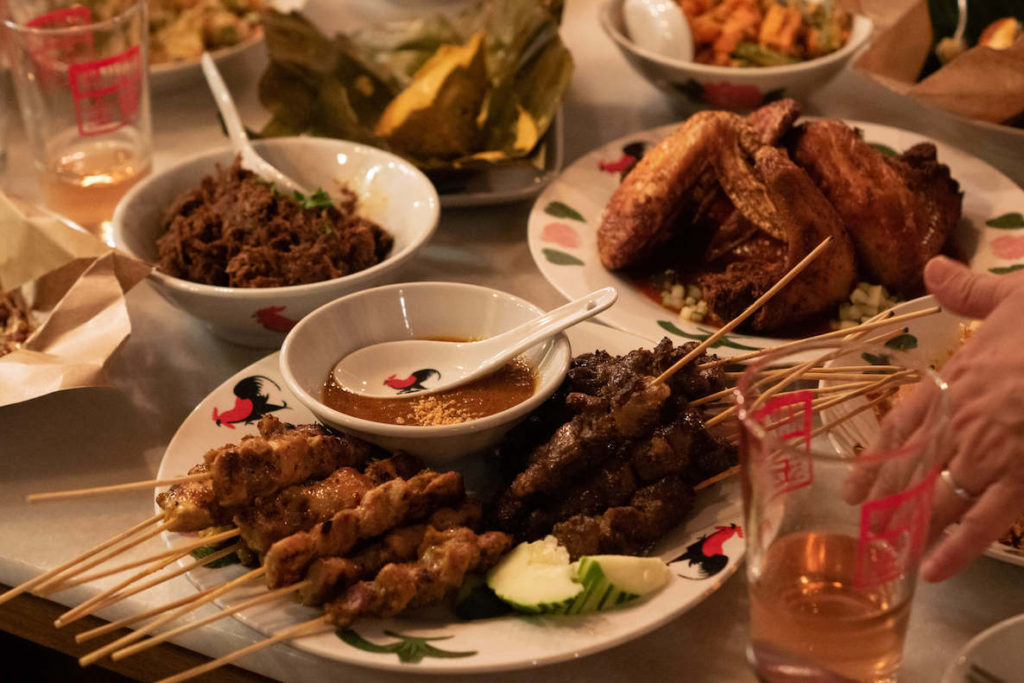
Opened by Ange and John Branca in 2016, Saté Kampar introduced many Philadelphians to Malaysian food with great buzz, acclaim and a James Beard semifinalist nod.
A 49-seat BYOB with a small open kitchen, dining room dominated by a coffee and tea bar, the vibe was loud and lively, even late on a Monday when we visited.
The dining room was filled with young couples (many of them restaurant workers themselves) and groups of friends splitting magnums of cheap wine and six packs of beer.
Where Tang tries to accommodate his market, Branca unapologetically cooks her food as she pleases.
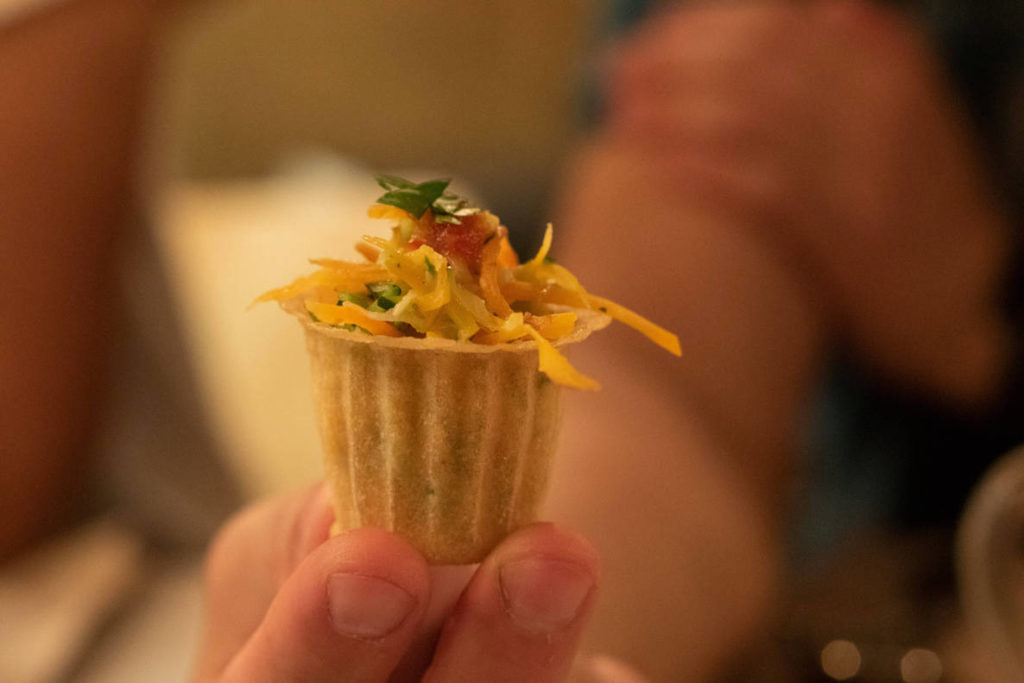
Tang says, as our pie tee, petit rice flour and egg cups stuffed with shredded carrot and jicama, arrive, “This is a very honest place for me. There are very few people like Ange who are so passionate. It’s why this place is so successful.”
While Saté Kampar serves halal meat (Islam is the majority and state religion of Malaysia), the familiar menu statement to let the server know if you have allergies so that the restaurant can accommodate is here replaced by, “Please be aware that our restaurant uses ingredients that contain all the major FDA allergens.”
Hyperallergenic dining: a different kind of no f’s given from Tang’s.
The menu is succinct, making it possible to eat nearly all of it, as we did. The top half offers six varieties of Saté (chicken two ways, beef, goat, tofu and pork), which Branca points out should be eaten as a main course and in abundance, rather than as a single-stick Americanized, bougie cocktail appetizer. Get the goat.
The bottom half consists of two rice dishes and one noodle dish meant to be eaten individually (“Malaysians don’t share rice”—we broke that rule within 10 seconds); and lauk, shareable dishes—one each of beef, chicken and fish, along with a salad and pickled vegetables.
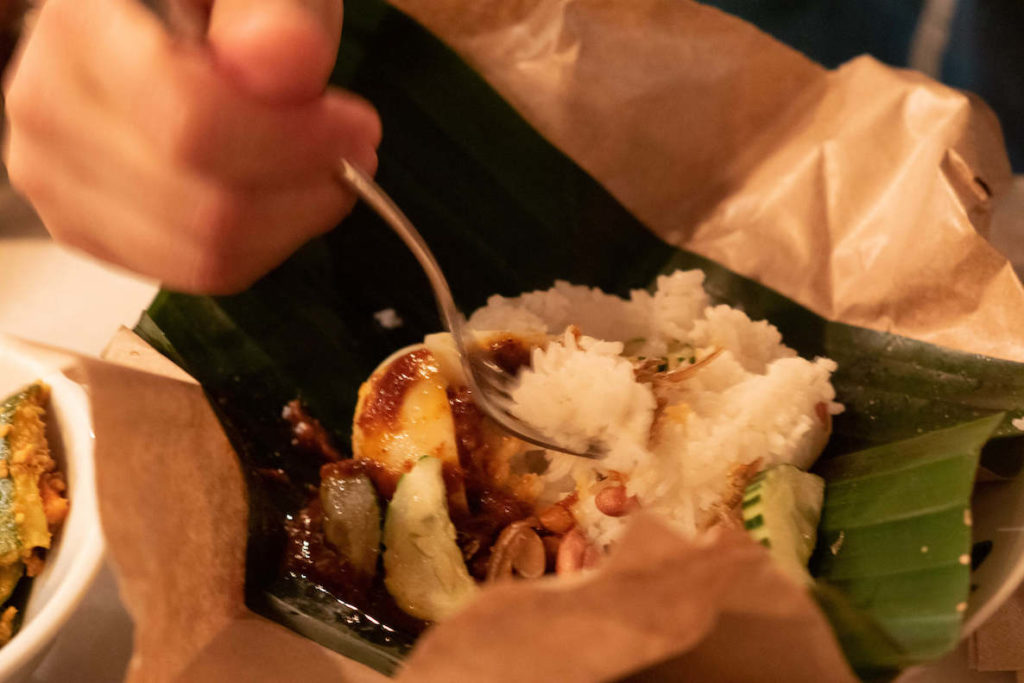
A standout that made us swoon was the nasi lemak bungkus, a banana-leaf-wrapped packet of steamed coconut rice, accented by sambal, peanuts, tiny dried anchovies and hard-boiled egg, the menu description of which reads, in part, “Essentially a fragrant, flavorful, magical packet of Malaysian awesomeness.”
Somehow in Branca’s hands, it is not hyperbolic. Even if you break the rules and share, angle to be the one to open the packet so you get a face full of aromatic steam, the aforementioned magic. Branca has a story for every dish on the menu—this one was her breakfast before school in Malaysia.
A menu description that undersells is the otak-otak nyonya, the “fluffy fish soufflé,” a description that makes it sound like something served at an orphanage in a children’s book. On past visits I was turned off by what sounded to me like curried gefilte fish so hadn’t ordered it. Big mistake.
Branca’s dish rivals Pierre Calmels’s quenelles at French restaurant Bibou for lightness and technical precision, but with redolent spices—ginger, galangal, turmeric, lemongrass and betel leaf—combined with king mackerel, egg and coconut cream—that kept us going back for more to identify each component.
Where nasi lemak bunkus is luscious and aromatic, the other rice dish, nasi ulam, is fresh, artfully arranged shredded fish, coconut, herbs, bean sprouts and sambal on a mound of rice, to be combined together into a salad at the table.
With Ku-Mah’s achat, twice-pickled vegetables flavored with sambal, the dishes together serve as a refreshing foil to the meat (or tofu) Satés and main meat dishes, the rendang daging, a slow-braised beef (think Malaysian ropa vieja), and ayam kurma, a coconut-based potato and chicken stew.
Too many BYOBs write off their beverage program as a non-starter given that they don’t have a liquor license. Saté Kampar makes it a signature with an extensive kopitiam (coffee shop) menu as well as coconut and ribena (black currant cordial) drinks. The beverages here are very much part of the dining experience.
Where Tang strives to make his menu accessible to the broader Philadelphia market via translations and familiar dishes, Branca is charmingly but resolutely uncompromising. Where Tang’s philosophy is one of balancing art and commerce, Branca’s is motivated to distinguish between survival and intent: “I’m here to tell a story. To put a spotlight on this kind of cuisine. The reason I’m here is to work on growing a community. A lot of this is lost cuisine even in Asia.”
As Tang says, “Every dish at Sate Kampar has a story. And every time I’ve been here Ange is here to tell it. I don’t remember what the f**k she says, but I love that…for me, I’m here to make new authenticity.”
Like the cuisine of Malaysia, which draws heavily from China, South Asia and Europe, Branca was shaped by multiple cultural influences. She has no single first language, growing up speaking—and thinking—in Chinese, English and Malay.
She was educated by Irish nuns in Malaysia and studied accounting and business computing at Heriot-Watt University in Scotland. Branca originally came to Philly in 2000 as a Deloitte consultant.
Like Tang, her ability as a restaurateur is informed by her education and experience in the corporate world. Unlike Tang, she’s less interested in using her business chops to meet customers where they are. She is on a mission to have guests learn the cuisine of her childhood, as well as those of her chef colleagues cooking the cuisine of their own cultures.
Eat at the restaurants mentioned in this articleDo Something
Her advice to guests? “I created a restaurant with intent. I don’t bend over backwards. Be patient and don’t drive business owners to do things they don’t want to do.”
Branca’s goal is to bring us together over something all Philadelphians can agree with—good food, lovingly prepared, is worth celebrating. “Anyone who tries to understand the other is more cultured,” she says. And in the social media age, it is easier than ever to learn about the food of others.
As Tang says, “Every dish at Saté Kampar has a story. And every time I’ve been here Ange is here to tell it. I don’t remember what the fuck she says, but I love that…for me, I’m here to make new authenticity.”
Next month: Ange Branca from Saté Kampar takes us out.
Jonathan Deutsch is a professor of Food and Hospitality Management at Drexel University. This story is part of a serialized book running in The Citizen throughout the year.
Photos by Danya Henninger


